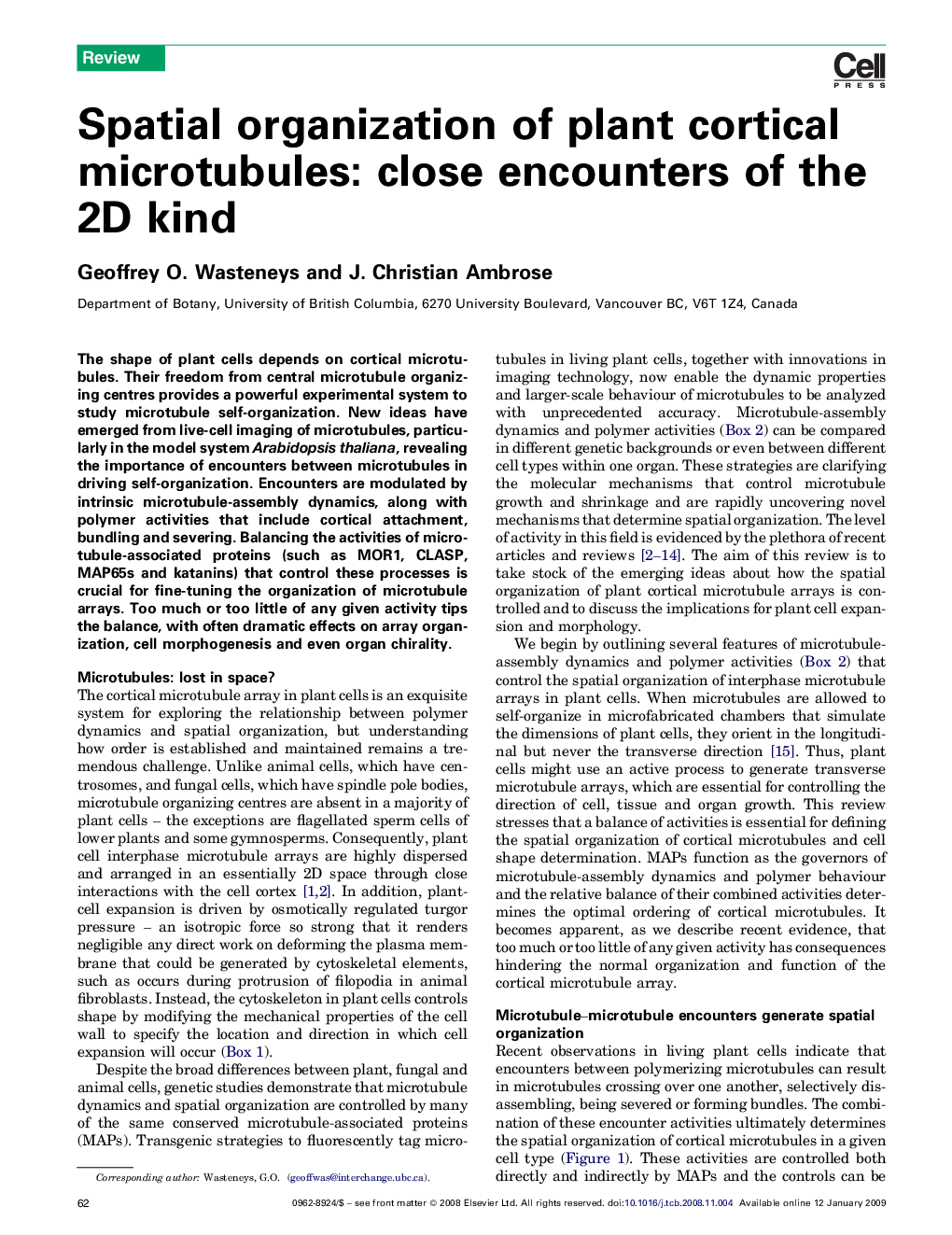| Article ID | Journal | Published Year | Pages | File Type |
|---|---|---|---|---|
| 2205002 | Trends in Cell Biology | 2009 | 10 Pages |
The shape of plant cells depends on cortical microtubules. Their freedom from central microtubule organizing centres provides a powerful experimental system to study microtubule self-organization. New ideas have emerged from live-cell imaging of microtubules, particularly in the model system Arabidopsis thaliana, revealing the importance of encounters between microtubules in driving self-organization. Encounters are modulated by intrinsic microtubule-assembly dynamics, along with polymer activities that include cortical attachment, bundling and severing. Balancing the activities of microtubule-associated proteins (such as MOR1, CLASP, MAP65s and katanins) that control these processes is crucial for fine-tuning the organization of microtubule arrays. Too much or too little of any given activity tips the balance, with often dramatic effects on array organization, cell morphogenesis and even organ chirality.
